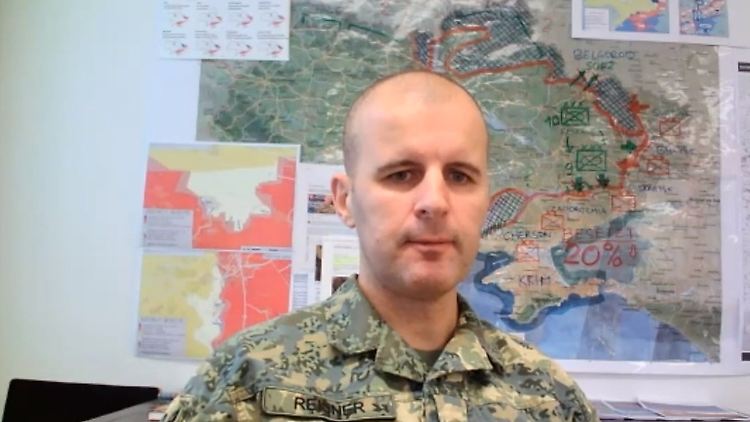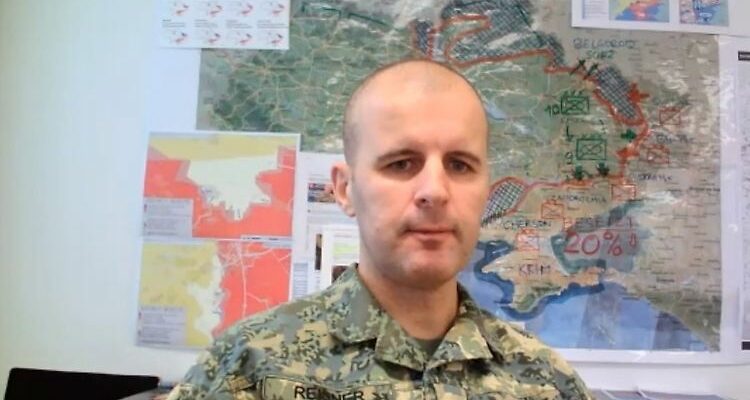A Ukrainian drone may have set fire to a gas terminal hundreds of kilometers away in northern Russia. Colonel Markus Reisner explains to ntv.de what new strategy is behind it and what chances of success it has
ntv.de: Russia reported a burning liquid gas terminal in the Baltic Sea port of Ust-Luga near Saint Petersburg on Sunday. It was said that the fire was caused by external influences. If it was the Ukrainians, then a drone would have flown more than 800 kilometers over Russian or Belarusian territory. Without being detected. Is that as spectacular as it sounds?
Markus Reisner: Based on the information we now have, we know that the last Ukrainian drone attacks covered distances of over 1,200 kilometers. During the attack in Ust-Luga, a gas terminal was at least damaged, if not destroyed. This actually reflects Kiev’s new strategy. At the end of last year, Ukrainian officials openly outlined the goal for 2024, namely to move from the offensive of the summer of 2023 to the defensive, that is, to hold the ground they had won. At the same time, however, they want to try to bring the war into Russia.

Markus Reisner is a colonel in the Austrian armed forces. Every Monday he analyzes the war situation in Ukraine for ntv.de.
A difficult undertaking, since Western supporters say yes: Russian territory must not be attacked with our long-range weapon systems. Now Ukraine can do this with its own drones?
Since the turn of the year, we have seen that Ukraine is trying to achieve the first results here and is using drones to advance towards Leningrad, as far as Belgorod or as far as Moscow. A single hit can have a devastating effect on Russia, in this case extensive fires and explosions.
What type of drone is used and how does it manage to fly over such a large enemy area undetected?
For such a range, the drone needs a powerful drive and must therefore be larger than, for example, a small first-person view drone that can only stay in the air for a few minutes. So we have a system with a span of several meters with a tank and loaded explosives that is flown to the target using GPS. Because the drone flies very low – only about 150 meters above the ground – and is very small compared to an airplane or helicopter, it is difficult to detect by radar. There are low-altitude radar systems, but to fully monitor a huge country like Russia, you would need too many of them; that is not possible. That’s why there’s another intention behind such drone attacks: Ukraine wants to force Russia to withdraw the air defense it has at the front and use it to protect its own cities and infrastructure.
The measurable success of the attack is a burning gas terminal in a vast country. How many attacks of this kind would Ukraine have to carry out to have a noticeable effect on Russian logistics? One every day?
When it comes to attacks of this kind, we are actually talking about strategic air strikes that are designed to influence the course of the war. They can use this to deliver serious blows to the Russians, but the attacks are still lacking in massing. It is important to understand: In addition to the two intentions already mentioned, Ukraine also wants to influence the information space that determines what we think about the conflict.
She obviously succeeds. Otherwise, would I be asking you all these questions?
Exactly, that’s the point. Here Ukraine can actually show that it is very capable of regaining at least some of the momentum at the strategic level. This is also why these attacks are so important from a Ukrainian perspective.
Are there any estimates of how many drones of this type are currently available to Kiev?
These special weapon systems do not yet exist in sufficient numbers to saturate the Russians over a longer period of time, which would be necessary to actually bring them to their knees. One of Ukraine’s goals for 2024 is, in addition to the defensive strategy, to ramp up its own military industrial complex, also with the help of international defense companies. Among other things, to build precisely these systems in larger numbers, with which one can then have an impact deep into Russia. This has a big advantage for the defense industry: the war in Ukraine is a huge experimental field where you can try out many technologies and then see what effect they achieve.
But in terms of quantity you can’t come close to the potential of the Russians?
According to estimates, they produce between 100 and 150 cruise missiles and ballistic missiles per month, plus 300 to 350 of these Iranian drones, which Russia is now building itself. Ukraine is nowhere near reaching such figures. The drone, whose effect we saw yesterday, is – with technical differences – a counterpart to Iran’s Shahed drone.
In addition to the burning terminal, a video on ntv.de has also attracted attention in recent days, showing how a Bradley, a US infantry fighting vehicle, paralyzes a Russian T-90 main battle tank. Does this success represent a larger phenomenon?
The Bradley begins to target this T-90 with its autocannon. We see the clouds of explosions from the impacting explosive grenades. The Russian tank tries to evade, but is unable to maneuver due to the fire and runs into a tree. When he is also attacked by a first-person view drone, the crew escapes from the vehicle and tries to save themselves. You can see that she initially survived the bombardment. The crucial thing is that the Ukrainian armored personnel carrier is unable to penetrate the T-90’s armor.
So it’s not that big after allgreat effect. Then why is Ukraine spreading this video?
The short excerpt shown is intended to show in the information space that Ukraine is superior to the Russians technologically, as well as in tactics and combat technology. The Ukrainian crew attacked the T-90 with what was essentially an inferior weapon system, covering it with fire so that it was unable to fire at the Bradley itself. The T-90’s cannon would definitely have penetrated the Bradley. But the Ukrainian occupation was faster, forcing the Russians on the defensive, who fled in panic. The Ukrainians’ will to fight was greater than that of the Russians.
Is this “tank against tank” situation typical of the front at the moment? One would expect formations with several vehicles fighting together.
We are currently often observing such skirmishes because it is no longer possible to provide larger forces. The battlefield is under total surveillance thanks to the many drones. Larger formations are reconnaissance immediately and are often shot at by artillery or attacked and destroyed by drones while they are deployed. The question is, which weapon system or capability will break this stalemate? This could be the mastery of the electromagnetic field. If you prevent the other side from using drones, they can also carry out maneuvers with larger formations again.
What do you think: Was the T-90 still salvageable for the Russian army?
I suspect that in this particular case the Russians failed to recover the T-90 because the Ukrainians, in turn, attempted to destroy the T-90 entirely using first-person view drones. According to the Oryx platform, the Russians have lost around 100 T-90s so far, but the Russian production rate for new equipment is crucial. In recent months it has been said again and again that Russian industry will soon only be able to supply very limited supplies. So far, however, it has been constantly supplying supplies. It is not foreseeable that Russia will run out of strength.
Why is that?
This is partly because the Russian production sites are not attacked and Moscow receives support from abroad. It also has to be said: Compared to Western weapon systems, the Russians get more for less money. The quality may not be at the western level, but it is available in higher quantity.
Where does this different approach come from?
The West relies on high-precision weapons systems and very well-trained soldiers. Russia says: The masses do it. In the West, the goal during the Cold War was to protect one’s own soldiers as best as possible and to build high-quality equipment. The Leopard main battle tank in its most modern version is a device that is packed with technology, sensors and a high-performance weapon system. The Russians – and previously the Soviets – have assumed that they cannot produce at the same level technologically. Their approach was to meet quality through quantity. Russian military culture is fundamentally different from that of the West.
Despite the quantity, it has been said from the front for weeks that the Russians are fighting with high losses and are making little progress, so they are not very successful. At the same time, NATO assumes that Russia could also attack NATO territory in the next few years. Does that contradict itself?
This obvious contradiction can only be resolved by honestly saying that you have underestimated your opponent so far. I have been pointing this out again and again since spring 2022. We have to take the situation seriously because Russia is actually attempting a massive expansion here, based on weapons production and the constant flow of soldiers being recruited – Ukrainian officials assume around 1,000 to 1,100 men per day. This has immense potential. It is estimated that there are currently up to 500,000 Russian soldiers in Ukraine. At least 462,000 at the front and 35,000 as occupation troops. Double or two and a half times what Russia invaded in February 2022. And these soldiers are advancing, meter by meter, despite massive losses.
Frauke Niemeyer spoke to Markus Reisner
